Each submission gets timestamped with EST time and gets a unique identifier
assigned, example:
S10056


As a follow-up to the Baseline on Belonging survey, which identified how minority professionals experience obstacles on the path to licensure, the National Council of Architectural Registration Boards (NCARB) and NOMA are convening a series of focus groups in 2022.
Our second set of in-person focus groups will take place in Washington, DC on September 1, 2022. Descriptions of each focus group are below. Each focus group is limited to 25 in-person participants and 20 virtual participants to ensure we can create an engaging and safe environment. Please note that NCARB is offering a $50 Visa gift card to each participant, per focus group. To register for one or more of the focus groups, please click the in-person or virtual link beneath each focus group title.
Gaining the Right Professional Experiences (September 1, 11:00 AM–2:30 PM EST). The purpose of this group is to explore the roadblocks and solutions to gaining the necessary professional experience to become a licensed architect.
Journey to Licensure (September 1, 1:00–2:30 PM EST). The purpose of this group is to map the human journey and motivations to becoming a licensed architect.
Culture Disparities of NAAB-Accredited Programs (September 1, 3:00–4:30 PM EST). The purpose of this group is to explore ways to address culture disparities in NAAB-accredited programs.
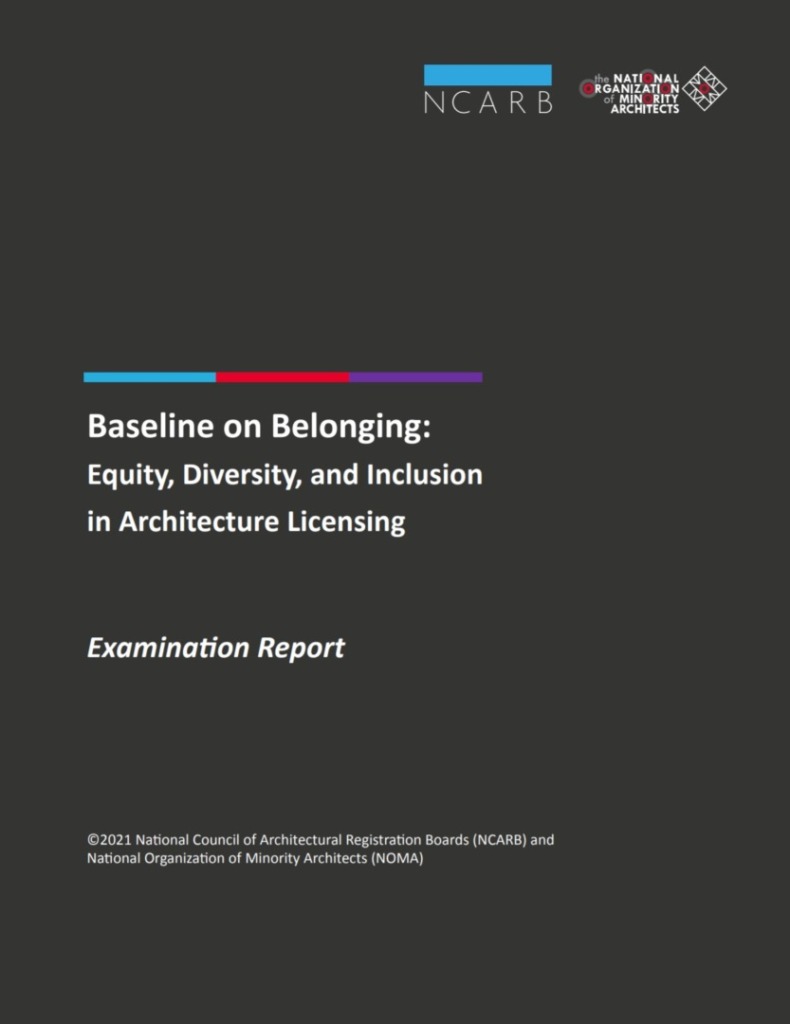
WASHINGTON, DC—As part of a series of reports regarding attrition from the licensure path by underrepresented groups, the National Council of Architectural Registration Boards (NCARB) and National Organization of Minority Architects (NOMA) released their report focused on examination. This in-depth report explores factors that impact equity, diversity, and inclusion for candidates taking the Architect Registration Examination®(ARE®).
The Baseline on Belonging: Examination Report is the second full report in the organizations’ joint study on diversity and attrition along the path to licensure. The report reviews survey data regarding respondents’ experiences preparing for and taking the examination, including impediments in the areas of financial support, coaching and mentoring, and overall cost. A subsection of the report, based on a multi-year collection of data by NCARB, indicates that people of color have significantly lower pass rates when taking the ARE compared to their white peers. Survey data from the full report highlights how factors like firm support and financial limitations may disproportionately impact candidates over 40 years old and people of color—especially women of color.
Previously, NCARB and NOMA released the Baseline on Belonging: Experience Report, which identified the effects that race, ethnicity, gender, age, and firm size can have on candidates documenting and reporting professional experience toward the Architectural Experience Program® (AXP®). By better understanding the key areas that impact underrepresented groups in the architecture profession, NCARB and NOMA aim to prompt widespread action throughout the profession to address these pinch points.
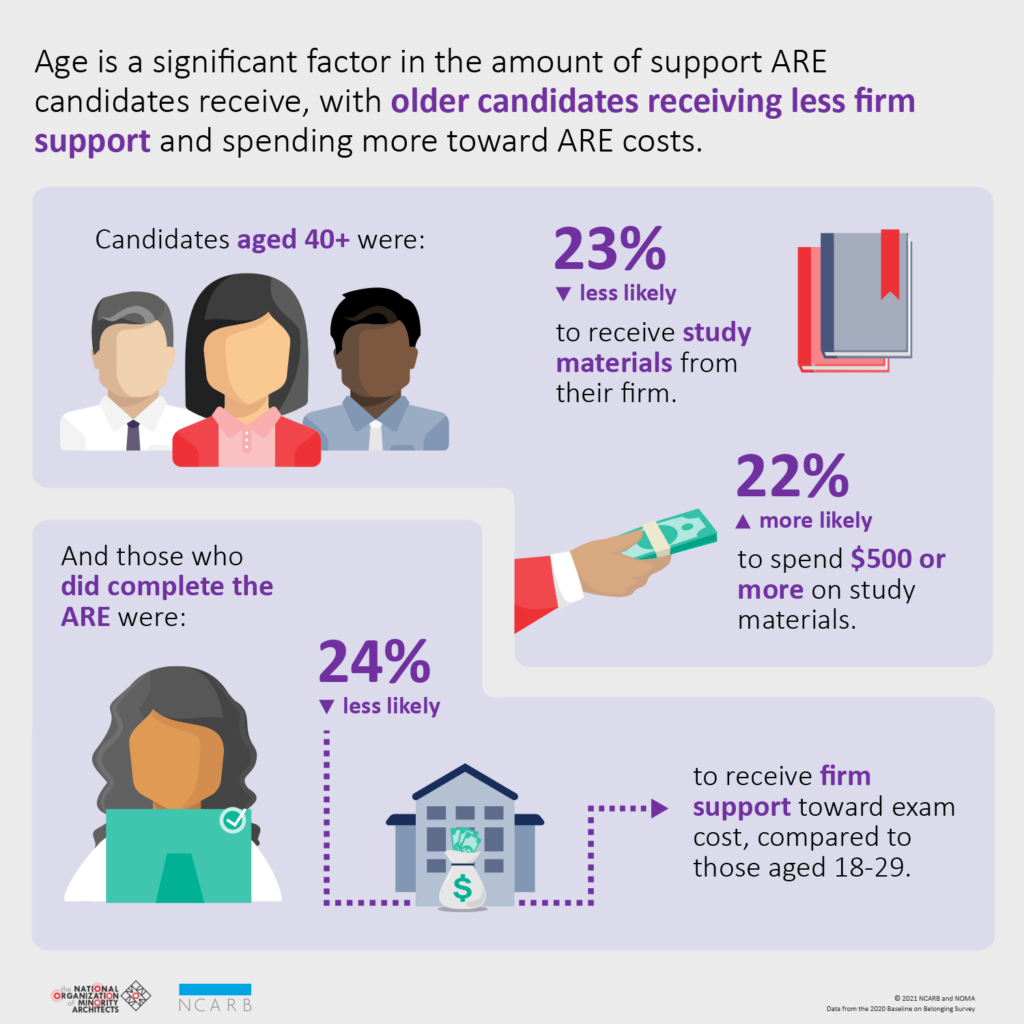
“The disparity in architecture exam pass rates is hard to see, but facing that number head on empowers us to ask better questions, and create new programs and policies that help ensure a successful career in architecture is both accessible and achievable to those historically marginalized by the process,” said NOMA President and Gensler Senior Associate Jason Pugh,NOMA, AIA, AICP, LEED AP. “The path to licensure is long, non-linear, costly, and strenuous, but even more so without the appropriate milestones to benchmark successes for people of color—and most drastically for Black and Latina women. NOMA leadership hopes to work collectively with the architecture collaterals to address the hurdles and challenges outlined within these clear findings over the next few years, and move us toward greater equity and representation overall.”
The ARE is a six-part exam required for architectural licensure by all 55 U.S. jurisdictions. To complete the exam, candidates must pass all six divisions within a five-year time period. Many candidates rely on firm support throughout the examination process, including access to firm-provided study materials and financial aid for the cost of the exam.
Because the ARE is the final step on the path to licensure for many candidates, exploring and addressing the underlying causes of the disparities highlighted in the Baseline on Belonging report may lead to greater diversity in the profession. In 2020, approximately 22 percent of architects in the United States identified as a racial or ethnic minority, according to data from NCARB’s Record holders. While that is a significant increase compared to previous years, it is confined to the Asian and Hispanic or Latino communities. About 2percent of architects identify as Black or African American—the same proportion seen a decade ago.
“We know that people of color are more likely to stop pursuing a license. The findings from this survey help us identify why,” said NCARB President Alfred Vidaurri Jr., NCARB, NOMA, FAIA. “We look forward to working with NOMA and the entire architecture community to explore the core causes of impediments on the path to licensure and present solutions. Together, we can ensure that the future of our profession better reflects the communities we serve.”
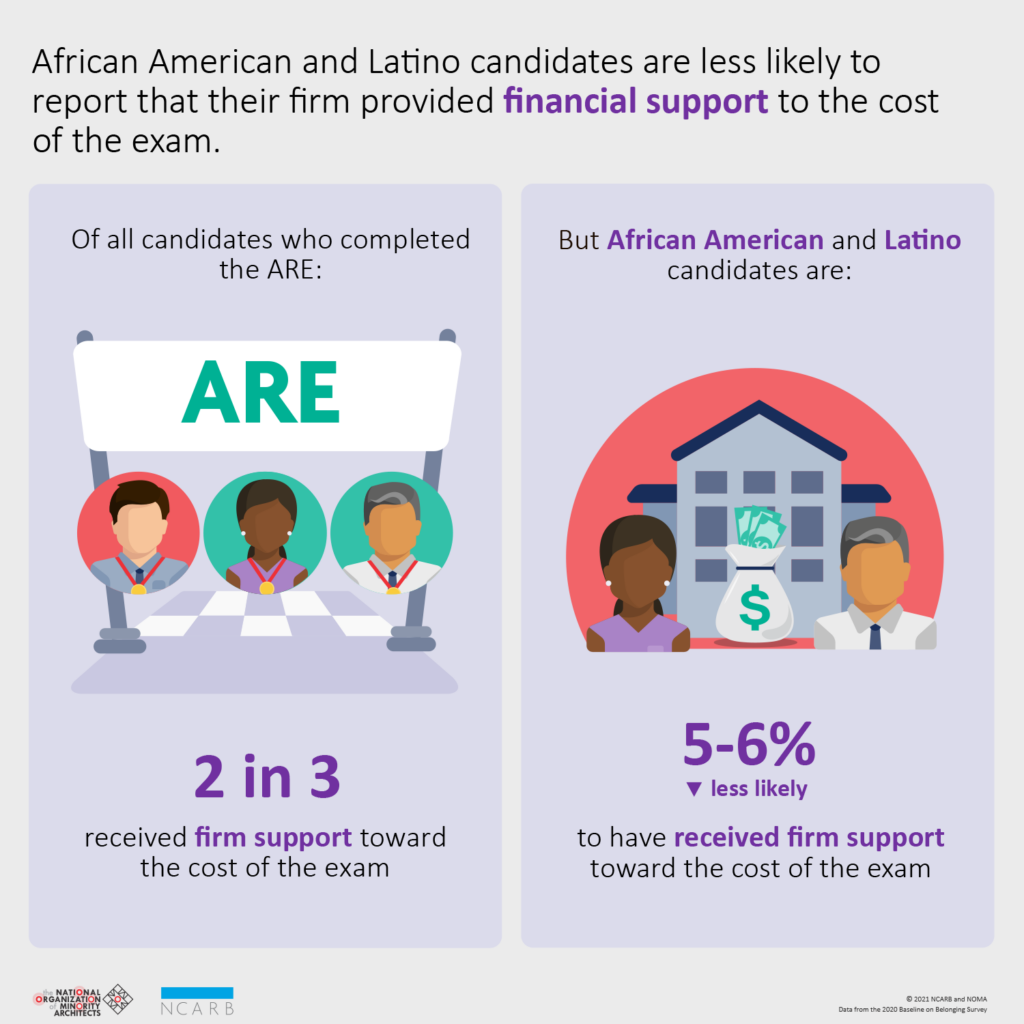
The Baseline on Belonging survey was released in early 2020 to over 70,000 individuals and received over 5,000 complete responses (including over 2,800 from people of color and nearly 2,500 from women). The examination report highlighted several key findings for additional study and exploration:
These findings are a first step in identifying and addressing pinch points during the examination component of the licensure path. To better understand the underlying cause of the disparities highlighted in the report, NCARB and NOMA will conduct focus groups and follow-up surveys. Because the exam represents a final, measurable confirmation of the education and experience candidates have gained, the disparities seen in ARE pass rates may signal additional disparities earlier on the path to licensure. Future Baseline on Belonging reports on education, firm culture, and career development may yield additional insights into the disparities found in the experience and examination reports. To learn more about next steps and how to participate in further study,subscribe to our mailing list. To learn more about the Baseline on Belonging study and download the full report, visit ncarb.org/belong.
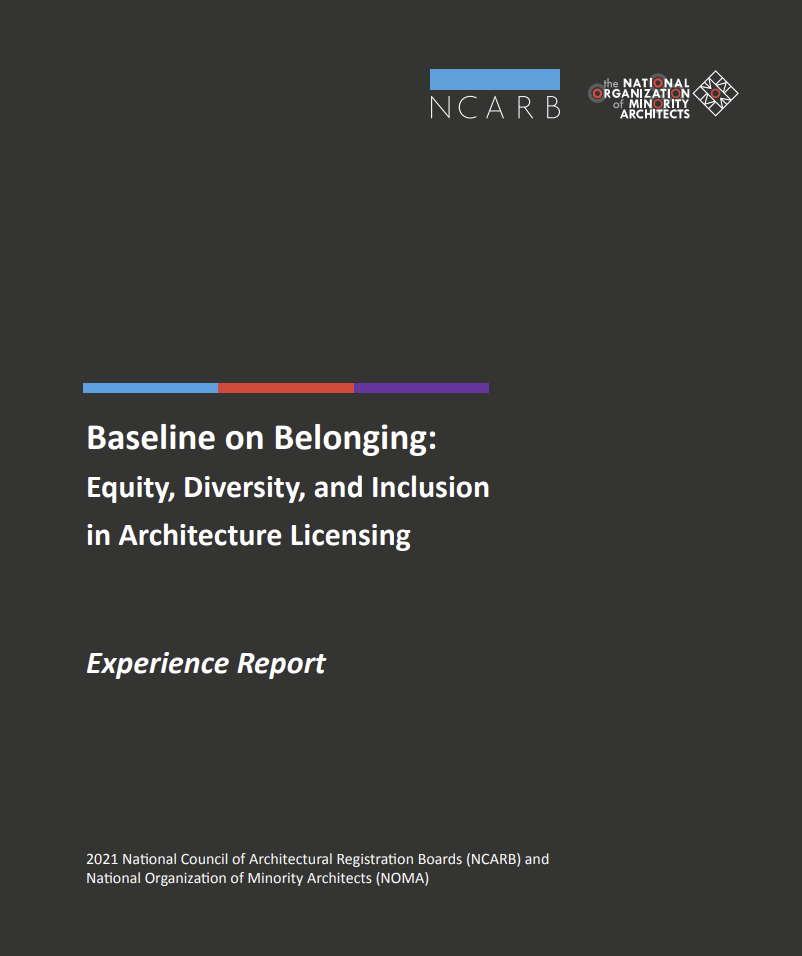
The National Council of Architectural Registration Boards (NCARB) and the National Organization of Minority Architects (NOMA) released an in-depth report exploring factors that impact equity, diversity, and inclusion for candidates gaining professional architecture experience.
The Baseline on Belonging: Experience Report reveals that interplay between factors such as race, age, and firm size can have a significant impact on an individual’s ability to navigate the Architectural Experience Program® (AXP®), which is a key step to earning an architecture license in the United States. Over the coming months, NOMA and NCARB will continue to analyze the survey results and release in-depth reports on four additional key topic areas: examination, education, firm culture, and career development.
In 2019, just over 11 percent of architects in the United States identified as a racial or ethnic minority, according to NCARB by the Numbers. And while representation along most career stages has increased slowly over the past several years, candidates of color are still 31% more likely to stop pursuing licensure. Understanding the factors that lead to attrition along the path to earning a license is the focus of the Baseline on Belonging study, which is based on results from a joint survey conducted by NCARB and NOMA in early-2020. Early findings from the survey were released in the summer of 2020.
“Understanding the challenges and hurdles that prevent minorities from achieving architecture licensure is of essential importance to NOMA,” said NOMA President and Gensler Senior Associate Jason Pugh, NOMA, AIA, AICP, LEED AP. “We are strongly committed to finding effective ways to reduce the barriers to licensure for all minority architects, especially Black female architects, who remain the least represented population in the profession. While the number of newly licensed Black architects has flatlined over the last couple of decades, we are pleased to see an increase in overall diversity for those starting the licensure process. With NCARB’s documentation and new understanding of the challenges candidates face on the path to licensure, the next steps forward must include a definitive action plan we can collectively harness to streamline the process going forward.”
To complete the AXP, candidates must earn 3,740 hours across six practice areas and frequently rely on their employers to provide opportunities in the necessary areas. By exploring respondents’ experiences navigating the AXP, NCARB and NOMA hope to identify areas where the program—as well as firms and supervisors—may create unintended barriers.
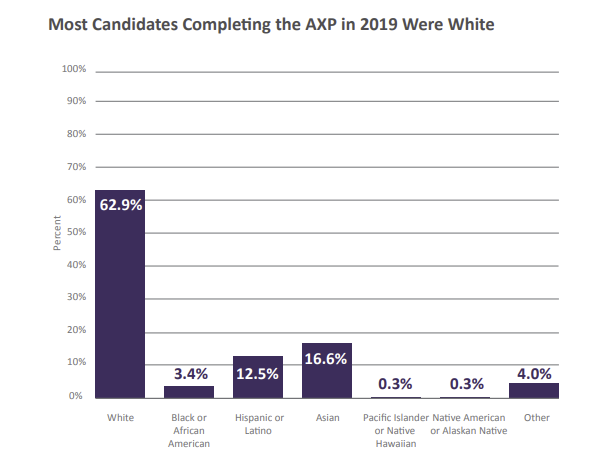
“NCARB is dedicated to ensuring the path to licensure is equitable and accessible to all,” said FY21 NCARB President Robert M. Calvani, FAIA, NCARB, Hon. FCARM. “It is a privilege to work together with NOMA to address this important issue for our profession.”
With over 5,000 complete responses (including over 2,800 from people of color and nearly 2,500 from women), the survey highlighted several key findings for additional study and exploration:
These findings are a first step in identifying and addressing pinch points during the experience component of the licensure path. To better understand the underlying cause of the disparities highlighted in the report, NCARB and NOMA will conduct focus groups and follow-up surveys. Many aspects of earning professional experience are inseparable from individual firm culture, so necessary solutions to experience-related impediments may vary widely.
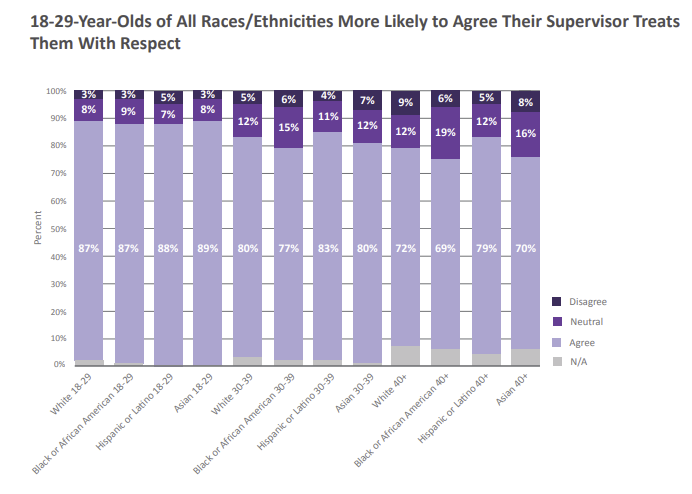
“The path to professional licensure as an architect is a challenging one for most, and NOMA is keenly interested in helping to remove unnecessary barriers to entry for those who wish to design the spaces where we all live, work, and play,” said past NOMA President and HOK Principal Kimberly Dowdell, AIA, NCARB, LEED AP. “We appreciate the opportunity to partner with NCARB, leveraging their in-depth data analysis capabilities, to determine pinch points in the licensure process, particularly for under-represented candidates. In collaboration with NCARB and the other architecture anchor institutions, NOMA looks forward to the process of collectively evaluating the survey data to effectively craft policies designed to facilitate a more accessible path to licensure for all people.”
To learn more about next steps and how to participate in further study, subscribe to our mailing list. To learn more about the Baseline on Belonging study, visit https://ncarb.org/belong.


Each submission gets timestamped with EST time and gets a unique identifier
assigned, example:
S10056


Your ID: S12312312






This notification means your entry was sent successfully to the system for review and processing.
If you have any further questions or comments, reach out to us via the main contact form on the site
Have a great day!







New to NOMA?
Create your account
Already have an account?
Sign in

Not A NOMA Member? Click Here!
Create your account
